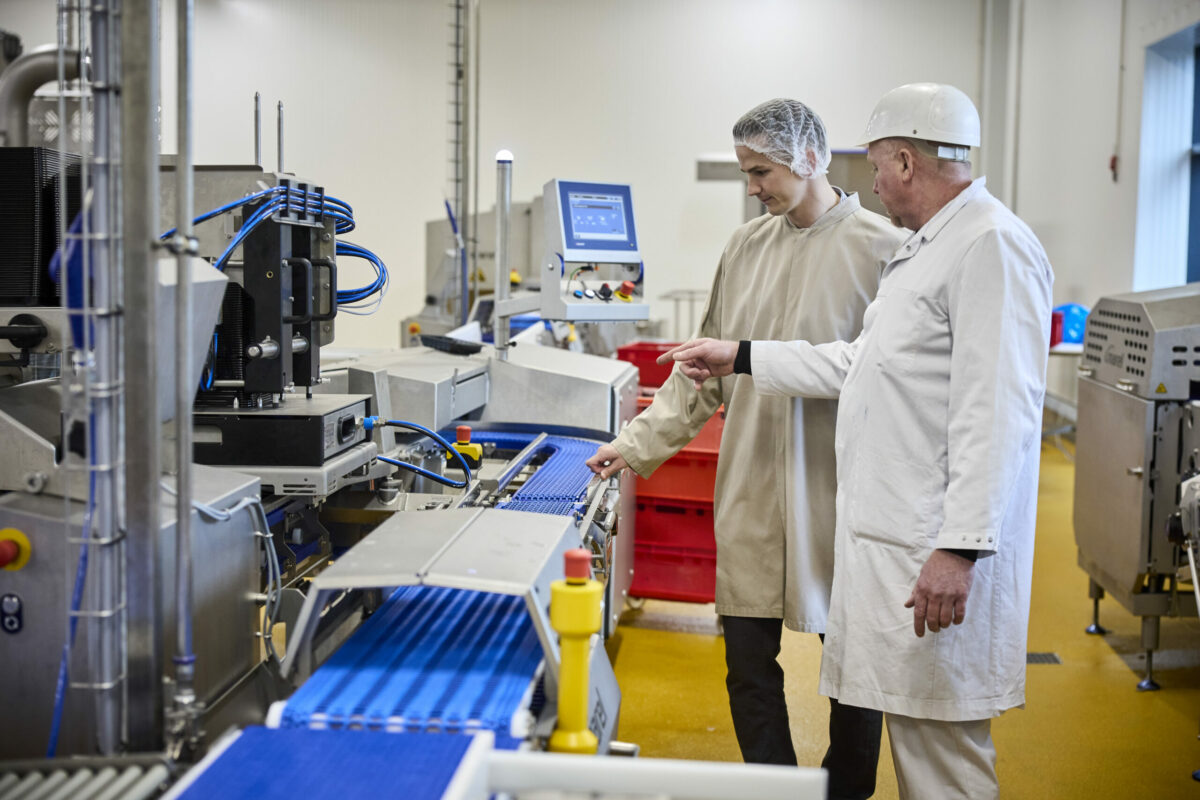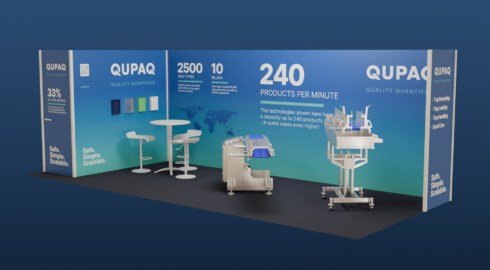Top 5 Reasons for Downtime in Food Manufacturing
Here are the top 5 reasons for downtime in food manufacturing and how technology can help solve them.
Do Not Let the Lines Run Empty
Downtime in food manufacturing can have a significant impact on productivity, profitability, and customer satisfaction. In order to minimize downtime and optimize operations, it is important to understand the root causes of downtime and take steps to address them. Here are the top 5 reasons for downtime in food manufacturing and how technology can help solve them:
1. Manual Labor
Manual labor can be a major source of downtime in food manufacturing, as it is prone to errors, inefficiencies, and injuries. This can result in lost production time, increased costs, and reduced quality.
Employee shortages can cause disruption across the manufacturing floor, especially in smaller operations where there may only be a few workers who are licensed to operate certain machines.
Automation technology, such as robotic systems and automated packaging machines, can help minimize downtime by reducing the need for manual labor and improving the efficiency and accuracy of operations.
2. Hygiene
In 2022, salmonella and listeria represented almost two-fifths of all food product recalls— the largest share in five years. Maintaining proper hygiene is critical in food manufacturing, as it helps prevent the spread of contaminants and food-borne illnesses.
Downtime can occur when cleaning and sanitizing operations are performed manually, which can be time-consuming and prone to errors. Additionally, federal regulations define specific procedures to minimize contamination of food products by people in manufacturing, packaging and warehousing.
Automated cleaning systems, such as automated pressure washing systems, can help minimize downtime by improving the speed and efficiency of cleaning operations, reducing the risk of contamination, and increasing overall hygiene levels. Technology for Food Manufacturing should of course be able to clean fast and efficiently.
3. Changeovers
In food manufacturing changeovers can be a significant source of downtime . Changeovers can be time-consuming, as they require manual adjustments, cleaning, and maintenance.
Generally, the cost of a changeover is calculated by multiplying line speed (products per minute) by contribution (price per product) by average changeover time. This can result in a cost per changeover of thousands of dollars. Additionally, longer changeovers can lead to reduced production capacity and an increased cost of labor per unit.
Automated changeover systems, such as automated tooling systems and quick-release clamps, can help minimize the time required for changeovers and improving the efficiency of the process. Flexibility in equipment should be expected and the vendor must be able to answer any question about changeover time with satisfying documentation.

4. Equipment Maintenance
Equipment maintenance is critical in food manufacturing, as it helps prevent breakdowns and prolong the lifespan of equipment.
Downtime can occur when maintenance is performed manually, as it can be time-consuming and prone to errors. Always adhere to Current Good Manufacturing Practices (CGMPs) mandated by the U.S. Food and Drug Administration (FDA) in the US or similar practices in your region.
Maintenance technology, such as condition monitoring systems and predictive maintenance software, can help minimize downtime by detecting potential equipment problems before they occur, reducing the need for manual maintenance, and improving the efficiency of maintenance operations. Always question and look for reliability when investing in new technology.
5. Product Quality
Product quality is critical in food manufacturing, as it affects customer satisfaction and the reputation of the company. Today, quality control is an integral part of manufacturing and there are several government and professional regulatory bodies in place aimed at ensuring quality product is being sold to consumers.
Downtime can occur when quality control operations are performed manually, which can be time-consuming and prone to errors. Quality control technology, such as automated inspection systems and quality management software, can help minimize downtime by improving the speed and accuracy of quality control operations, reducing the risk of product defects, and increasing overall product quality.
Quality control procedures for the food industry include ensuring that the product is the correct size, shape, and weight, properly sanitizing and cleaning equipment, implementing preventive quality control measures, adhering to good manufacturing procedures, labeling food accurately and guaranteeing good manufacturing procedures (GMPs).
Using sensors to measure the quality for both product and production line will give you realtime insights and visualizations to help you assess risk, identify bottlenecks and find the best place to improve quality overall.
Cost of Downtime
Downtime in food manufacturing can have significant impacts on productivity, profitability, and customer satisfaction. In the food industry downtime account for at least 5% of productivity, with some as much as a 20% loss of working time. This can be several millions worth over a full year.
To determine the cost of downtime, first calculate the average hourly pay rate of impacted employees. Then assign a percentage for the level of impact downtime will have on productivity. Ex: if only 40% of the product line is operational, the loss in productivity is 60%. If you have 200 employees at an hourly rate of $60 and they experienced a 60% loss in productivity, the cost of employee downtime would be $7,250.
Also read: Cost per Unit
The cost of impacted employees from downtime correlates directly with the decline in products manufactured. To calculate this loss, calculate the production hours per day, the average amount of units produced and the hours of downtime. Dividing the average units produced by the hours of unhalted production during a day. Ex: $500,000 in sales orders during an eight-hour shift amounts to $62,500 in sales orders created per hour. Multiply this revenue by the total hours of downtime and you will find that 3 hours of downtime is $187,500 worth + the cost of employee downtime.
Expect the expected… and the unexpected
Downtime should be expected to some degree. Planned downtime for cleaning and maintenance will always be there, it just has to be kept on a minimum.
Unplanned downtime, however, is something you should always focus on eliminating. According to a research study from Vanson Bourne, roughly 82 percent of companies that had unplanned downtime over a period of three years, experienced outages that lasted an average of four hours.
By understanding the root causes of downtime and implementing technology solutions, food manufacturers can minimize downtime, improve efficiency, and enhance the quality of their operations. Automation technology, such as robotic systems, automated packaging machines, cleaning systems, changeover systems, predictive maintenance systems, and quality control systems, can help solve downtime challenges in food manufacturing and optimize operations.
Also read: Avoid Downtime: Log and Monitor Tray Denesting Success Rate




